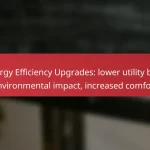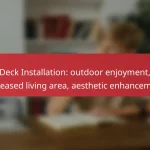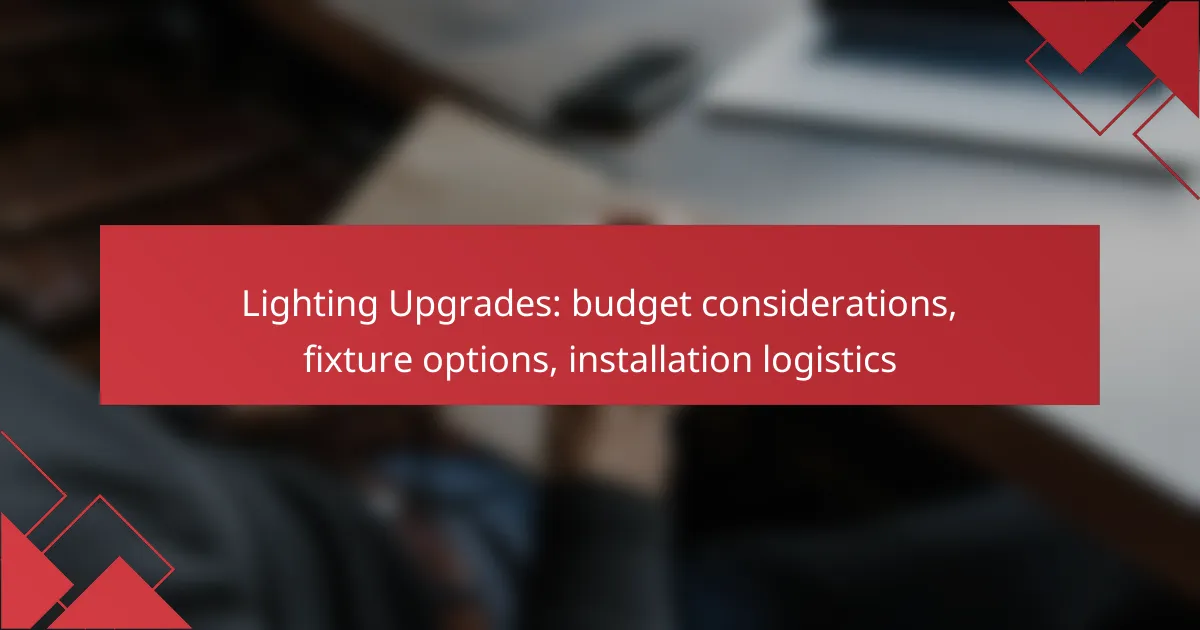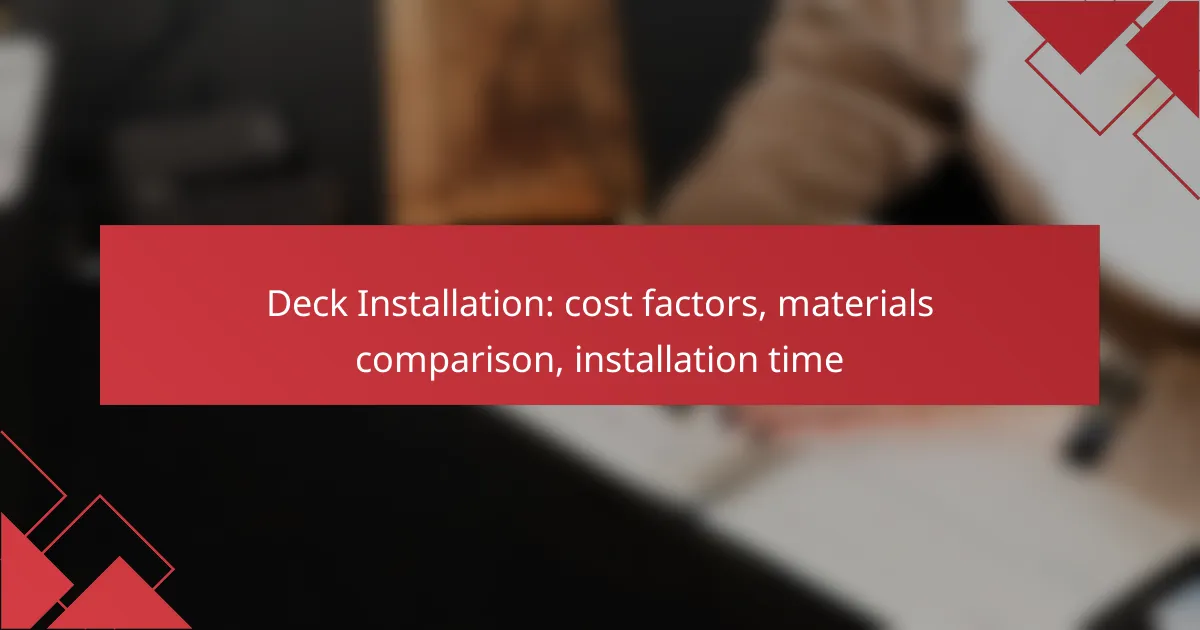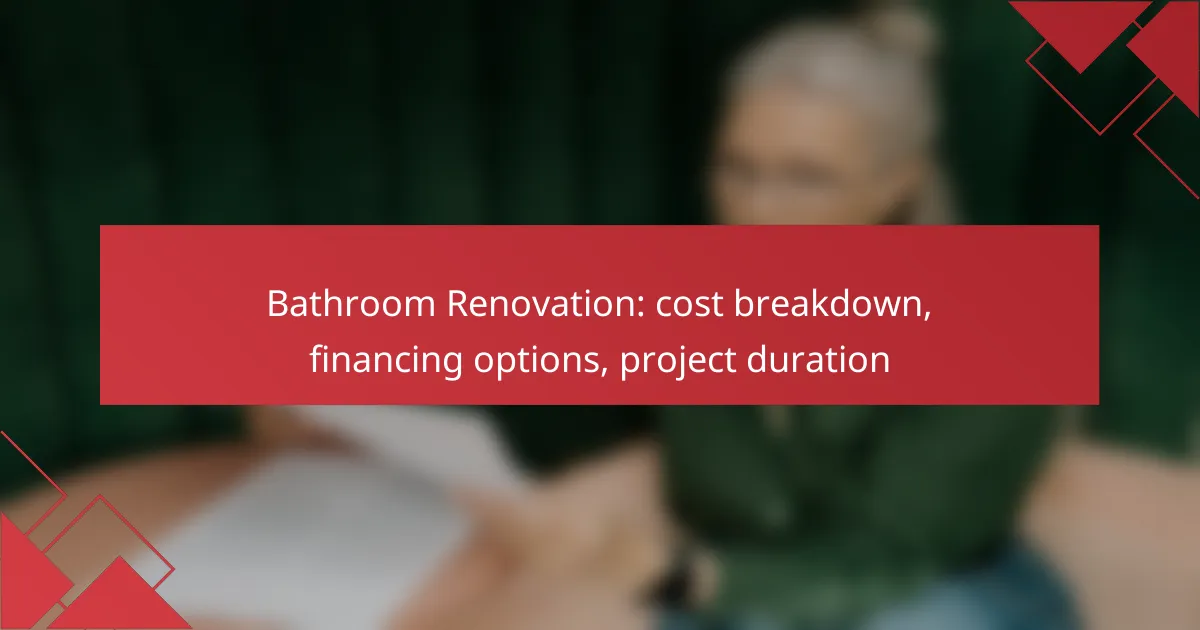Effective landscape design requires careful budgeting to account for various elements such as plants, hardscaping, and design fees. Understanding the costs associated with different plant types and sizes, as well as the expenses for hardscaping features like patios and walkways, is essential for creating a beautiful and financially feasible outdoor space. A well-structured budget not only helps achieve your aesthetic vision but also ensures long-term maintenance is manageable.

How to budget for landscape design in the UK?
Budgeting for landscape design in the UK involves estimating costs for plants, hardscaping, design fees, and ongoing maintenance. A well-planned budget helps ensure that your landscape project meets your aesthetic goals while remaining financially manageable.
Estimate costs for plants
When estimating costs for plants, consider the types and quantities you want to include in your landscape. Prices can vary significantly; for example, small shrubs may cost around £10-£30 each, while larger trees can range from £100 to several hundred pounds depending on species and size.
To stay within budget, prioritize native plants that are well-suited to your local climate, as they often require less maintenance and water. Creating a list of desired plants and researching their costs at local nurseries can help you make informed decisions.
Calculate hardscaping expenses
Hardscaping expenses include materials and labor for features like patios, walkways, and retaining walls. Costs can vary widely; for instance, paving stones might range from £20 to £50 per square meter, while installation can add another £30-£70 per square meter depending on complexity.
Consider the long-term durability and maintenance of materials when selecting hardscaping options. Investing in higher-quality materials may reduce future repair costs, making it a worthwhile consideration for your budget.
Include design fees
Design fees for landscape projects can vary based on the designer’s experience and the project’s complexity. Typically, you might expect to pay between £50 and £150 per hour, or a flat fee that could range from a few hundred to several thousand pounds for comprehensive plans.
To manage design costs, consider starting with a consultation to outline your vision and then deciding whether you need full design services or just guidance on specific elements. This approach can help you control expenses while still achieving a cohesive look.
Account for maintenance costs
Maintenance costs are an essential part of your landscape budget, covering ongoing care for plants and hardscaping. Regular maintenance might include lawn care, pruning, and seasonal planting, which can add up to several hundred pounds annually.
To minimize long-term maintenance costs, choose low-maintenance plants and materials that require less upkeep. Establishing a maintenance schedule and possibly hiring a professional service can help keep your landscape looking its best without overspending.

What are the average costs of plants in the UK?
The average costs of plants in the UK can vary significantly based on type, size, and source. Generally, you can expect to spend anywhere from a few pounds for smaller plants to several hundred pounds for larger, more mature specimens.
Common plant prices
Common garden plants typically range from £5 to £30, depending on their size and variety. For instance, small perennials and shrubs can cost around £10, while larger trees may start at £50 and go up to £300 or more. Specialty plants, such as rare varieties or those requiring specific care, can exceed these ranges.
Factors affecting plant costs
Several factors influence the cost of plants in the UK, including the plant’s size, rarity, and the growing conditions it requires. Local availability can also play a role; plants that are native or commonly grown in your area tend to be less expensive than exotic species. Additionally, purchasing from a local nursery may offer better prices compared to large retail chains.
Seasonality can affect prices as well. For example, buying plants during peak planting seasons, such as spring, may yield higher costs compared to off-peak times when discounts are more common. Always consider the long-term care and maintenance costs associated with different plants, as some may require more resources than others.

What are the hardscaping costs in landscape design?
Hardscaping costs in landscape design refer to the expenses associated with non-plant elements such as patios, walkways, driveways, and retaining walls. These costs can vary widely based on materials, design complexity, and local labor rates.
Average costs for patios
The average cost for patios typically ranges from $15 to $50 per square foot, depending on the materials used. Common options include concrete, pavers, and natural stone, each offering different aesthetics and durability.
When budgeting for a patio, consider additional expenses such as excavation, base materials, and installation labor. A well-planned patio can enhance outdoor living spaces and increase property value.
Pricing for walkways and driveways
Walkways generally cost between $10 and $30 per square foot, while driveways can range from $5 to $30 per square foot, depending on the material and design. Concrete and asphalt are popular choices for driveways, while pavers and gravel are often used for walkways.
When selecting materials, think about maintenance requirements and longevity. For example, while concrete is durable, it may crack over time, whereas pavers can be more easily replaced if damaged.
Cost of retaining walls
The cost of retaining walls can vary significantly, typically ranging from $20 to $50 per square foot. Factors influencing the price include the wall height, materials (such as timber, stone, or concrete), and site conditions.
Retaining walls serve both functional and aesthetic purposes, preventing soil erosion and creating level areas in sloped yards. Ensure to factor in drainage solutions, as proper water management is crucial for the longevity of the wall.

What design considerations should be taken into account?
When planning landscape design, key considerations include site conditions, local climate, and the balance between functionality and aesthetics. Each element plays a crucial role in ensuring a successful and sustainable landscape that meets both practical needs and visual appeal.
Assess site conditions
Understanding site conditions is essential for effective landscape design. Factors such as soil type, drainage, topography, and existing vegetation influence plant selection and hardscaping choices. Conducting a thorough site analysis can help identify potential challenges and opportunities.
For example, clay soils may require different plants compared to sandy soils, and slopes may necessitate retaining walls or terracing. Always consider the accessibility of the site for maintenance and installation as well.
Understand local climate impacts
Local climate significantly affects plant growth and landscape durability. Factors like temperature ranges, rainfall patterns, and seasonal changes should guide your plant selection and hardscaping materials. For instance, drought-resistant plants are ideal for arid climates, while moisture-loving species thrive in wetter regions.
Additionally, consider local weather events such as heavy winds or snow loads, which may impact the stability of structures and plant health. Familiarize yourself with hardiness zones to choose plants that will thrive in your area.
Incorporate functionality and aesthetics
A successful landscape design balances functionality with visual appeal. Think about how the space will be used—whether for entertaining, gardening, or relaxation—and design accordingly. For example, pathways should be both practical and visually pleasing, guiding visitors through the space.
Incorporating elements like seating areas, lighting, and water features can enhance both the usability and beauty of the landscape. Avoid overcrowding with plants or structures, as this can detract from the overall aesthetic and functionality.

How to choose the right plants for your landscape?
Choosing the right plants for your landscape involves considering factors like climate, soil type, and maintenance needs. Selecting suitable plants enhances the aesthetic appeal and ensures long-term sustainability in your garden.
Consider native plant options
Native plants are adapted to local climates and soil conditions, making them easier to maintain. They often require less water and are more resistant to pests and diseases, which can reduce your gardening costs over time.
Incorporating native species can also support local wildlife, such as pollinators, creating a balanced ecosystem in your landscape. Research local nurseries or extension services for a list of native plants suitable for your area.
Evaluate plant size and growth
When selecting plants, consider their mature size and growth habits. Some plants may grow larger than expected, which could lead to overcrowding or the need for frequent pruning.
As a general guideline, allow enough space between plants to accommodate their full growth. For example, smaller shrubs may need at least 2-3 feet apart, while larger trees could require 10-15 feet or more, depending on their species.
Match plants to soil type
Understanding your soil type is crucial for plant selection. Different plants thrive in sandy, clay, or loamy soils, and matching them to the right type ensures better growth and health.
Conduct a simple soil test to determine pH and nutrient levels. For instance, if you have clay soil, consider plants that tolerate heavy moisture, while sandy soils may require drought-resistant varieties. Adjusting soil conditions with organic matter can also improve plant success.

What are the best practices for hardscaping?
Best practices for hardscaping involve careful planning and material selection to create functional and aesthetically pleasing outdoor spaces. Focus on drainage, durability, and accessibility to ensure your hardscaping investments last and serve their purpose effectively.
Plan for drainage and water flow
Effective drainage is crucial in hardscaping to prevent water pooling and damage to structures. Incorporate sloped surfaces and drainage systems, such as French drains or permeable pavers, to direct water away from foundations and high-traffic areas.
Consider local rainfall patterns when designing your hardscape. In regions with heavy rainfall, ensure that your drainage solutions can handle significant water flow, while in drier areas, you may prioritize water retention features.
Choose durable materials
Selecting durable materials is essential for long-lasting hardscaping. Options like concrete, brick, and natural stone offer resilience against weathering and wear. Evaluate the climate in your area to choose materials that can withstand local conditions.
For example, in coastal regions, opt for materials that resist salt and moisture, while in colder climates, ensure your choices can endure freeze-thaw cycles. Investing in high-quality materials can reduce maintenance costs over time.
Design for accessibility
Accessibility should be a key consideration in hardscaping to ensure that all users can enjoy the space. Create pathways that are wide enough for wheelchairs and strollers, and use non-slip surfaces to enhance safety.
Incorporate ramps and gentle slopes instead of steep steps, and ensure that seating areas are easily reachable. Following local accessibility guidelines can help you create an inclusive environment for everyone.


